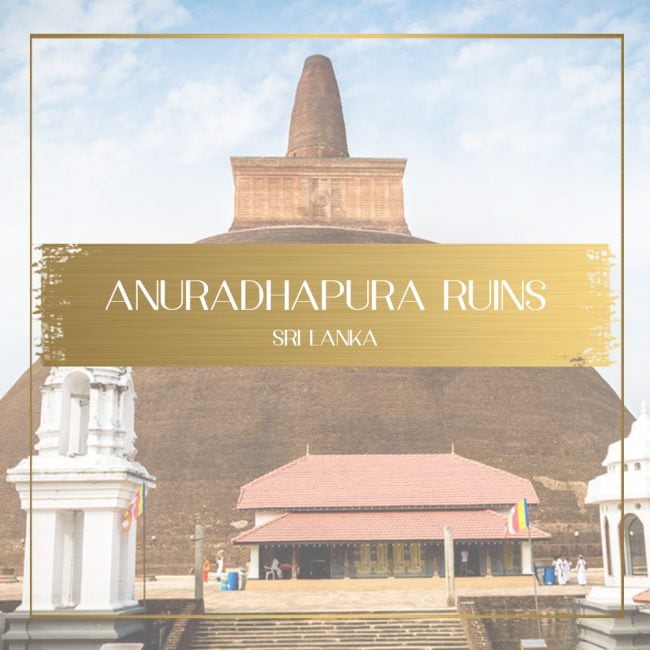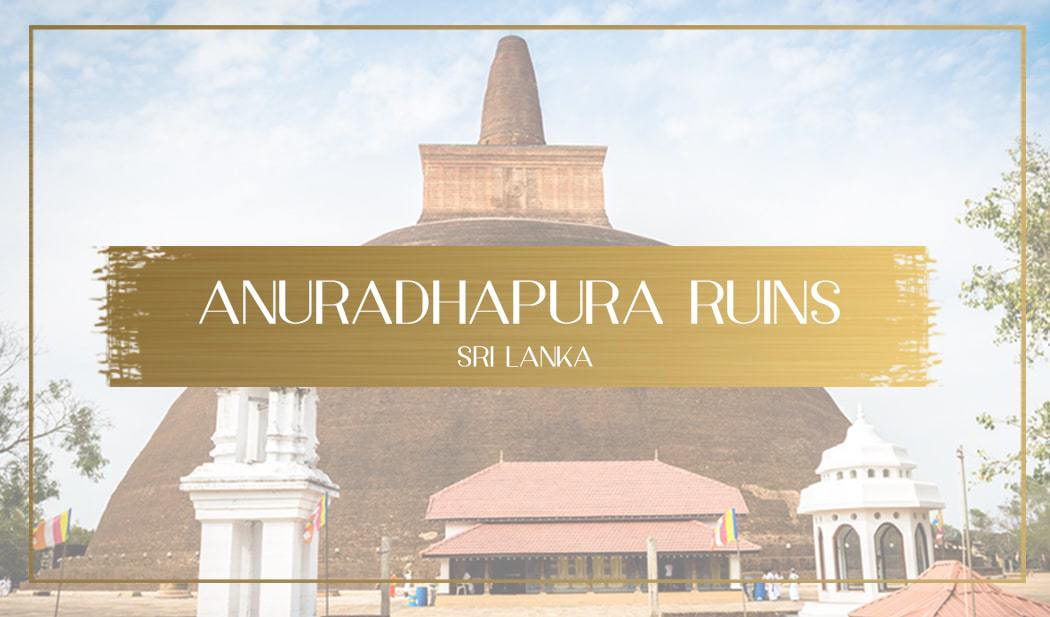Located just over four hours from Colombo, the ancient city of Anuradhapura is all that remains from Sri Lanka’s first capital city named so by King Pandukabhaya in 4th century BC.
Detailed and well thought out urban planning was key in the city’s growth which continued during his son’s 60 years in the throne. Anuradhapura was perfectly laid out and there were specific places for the cemetery, the place of execution, the Sacred Tree, the Palm of the Vyadhadeva, the Yona Quarter, the House of the Great Sacrifice and the village for the Candalas or slaves who were tasked with building houses for the higher classes.
The vestiges of that time can still be seen in the ruins of the well laid out walls and passages.
It was at the time of King Pandukabhaya’s grandson, Devanampiya Tissa, that Buddhism arrived in Sri Lanka through the preachings of the son of King Ashoka of India who was sent by his father to spread the message of peace after the many wars he started had caused so much death.
Buddhism brought great development and an architectural boom to Anuradhapura. Most buildings, the mote and the temples were built after this period when Anuradhapura found splendor. The royal family were great supporters of Buddhism and regularly made donations for the construction of many of the works of art.
The city and the civilization also developed in many other aspects such as education, healthcare and irrigation. Ponds were built and gardens constructed. Most of the tanks built then to provide irrigation are still visible today.
Anuradhapura is also home to the oldest human-planted tree in the world, Jaya Sri Maha Bodhi. Planted in 249 BC by King Ashoka’s daughter, this sacred fig tree in the Mahamewna Gardens is said to come from the historical Jaya Sri Maha Bodhi at BuddhaGaya in India under which Lord Buddha attained Enlightenment. It is a most sacred tree in Sri Lanka.
Between the overgrown nature, the thick tree foliage, the ruined walls and the ponds, a few remaining pieces of this ancient civilization, immortalized as a UNESCO World Heritage Site, remain. One of the most fascinating parts of Anuradhapura is the moonstone or sandakada pahana, a semi circular carved stone which symbolized the cycle of Saṃsāra in Buddhism or the continuous birth and death that most mortals go through. This is shown as a series of semi-circular bands that start from the middle lotus flower.
It is hard to imagine what Anuradhapura might have been at the peak of its importance for all that remains today are a couple of stupas and many buildings for which only the foundation has withstood the passing of time. The area would look much like Angkor Wat if it was 500 years younger but, at 2,500 years old, Anuradhapura is today a mere reflection of what it must have been when priests wandered its monasteries and its residents were bathing on its ponds.

